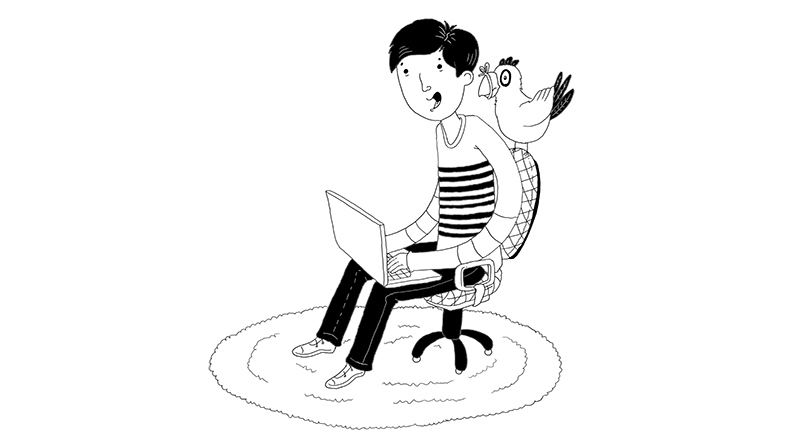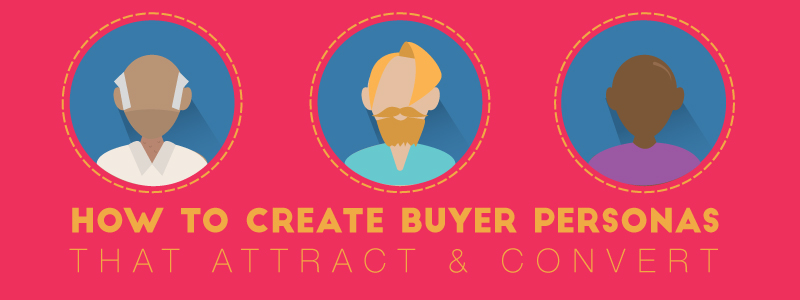A few tips on using an interview blog post template to share incredible content.
One of my favorite interview series that I work on weekly, happens over at Napa’s Daily Growl. My canine co-worker and I team up to find outstanding office dogs from all over the world, and then we interview them so the world will know what a great job they’re doing. This started off as a fun little side project for Napa’s thriving dog blog, but in turn has become one of his most popular features.
Before we talk about how to prepare for an interview, let me be honest with you. Interview posts aren’t always the easy route to take. Sure, sometimes, if you’ve developed easy-to-ask questions and a stellar interview blog post template, an interview can feel uncomplicated and easy. But, that isn’t always the case.
Sometimes preparing for interviews takes great effort and preparation. Other times the recording and dictation of the interviews can be more time consuming than creating the post. To ease the pain that can sometimes come along with posting an interview, follow some of these tips and create an interview blog post template to streamline some of your practices.
Do your research before you do anything else
First things first – do you even know who you’ll be interviewing? If you don’t, you’ll need to get out there and find someone either by networking or publicly asking on social media. When Napa and I are looking for new office dogs, we tend to take to Twitter. You’d be shocked how many canines there are on that social media platform, and many of them are barking about their jobs.
We Tweet to them and ask them if they’d be interested in interviewing with us. If we don’t hear back from them, no pressure. If we do, we move on to phase #2. When I’ve worked with other (human) clients, our interview subjects usually come to us via networking or direct suggestion.
Phase #2: Once you know who you’ll speak with, make sure you know enough about their professional history. If you don’t, do some digging. When someone is referred to me by a client as a person I might want to interview, I usually have a lot to learn about their background.
The first thing I do is ask questions of my client – where does this person work? What makes him or her important? What do you think your readers will gain from learning about this person? Then, I go online and find out everything I can. Sites like LinkedIn are helpful, but regular ol’ Google is my go-to tool when researching interviewees. In fact, I even like to read other interviews of the subjects to better prepare myself.
Prepare for and ace your interview
In the case of Napa’s office-dog interviews, it’s safe to say that we don’t need to do as much research before contacting the canines for the interview. It might come as a surprise to you, but dogs don’t have as much of a presence on LinkedIn as you’d think! So research is a bit less needed in these types of interviews, though consistency proves important. In fact, I have an interview question template that I send to all the dogs. We ask approximately ten standard questions of each working pup, and then Napa and I come up with a few personalized questions for the specific dog. While standard questions might seem like an easy way out, it’s proven to reel in very interesting and varied answers from the dogs. If there is one thing I’ve learned about interviewing dogs, it’s that they are all very outspoken.
Interviews that require more research should be planned out before you speak with your interviewee. Come up with a list of questions tailored to this individual and be sure to guide the conversation. But remember, when you interview someone, you’re going to want to let them do most of the talking. Be firm in your guidance, but allow some flexibility for off-the-cuff conversation. Some of the best interview questions and answers come from the conversation between planned out questions.
Transform your notes into a clean interview blog post template
Now that the interview is complete, it’s up to you to post an edited, tailored interview that will keep the reader’s attention. I’ve found the best way to do that is to use an interview blog post template, regardless of whether my interviewee walks on four legs or two. This template is easy to use.
The Interview Template
Interviews should be broken up into questions and answers, but should lead with informative headers, that describe the person you’re interviewing, link to their profile or business, and then get into the nitty gritty of the interview. A great interview template ends with a list of takeaways, or some off the cuff answers, or even simply a highlight reel of what you think the reader should take away from the interview. SEO is not a huge part of interview templates, although names and business names serve as natural keywords. Ten questions is typically a good limit — too many and you won’t get good answers.
Title alternatives:
- An Interview with [Name] of [Business Name]
- How [Name] [Did Something Awesome] by [Method]
- How [Name] Increased [Goal] by [%] Through [Doing Something Awesome]
We’ve said it before, but it’s so important I’m happy to repeat it over and over again. Regardless of what blog post type you’re sharing, you need a powerful title. If your interview doesn’t sound interesting, then why would anyone click on it?
Subtitle including their [name / business name] article goes here
To get all the SEO power I can muster, I try to include a post header to further tease my readers. Your header should include your optimized keyword if you have one, but at the very least their name, and be a basic one-to-two sentence further explanation of the title.
Introduction to Your Subject Subhead Goes Here
Some people glaze over introductions, but they’re really one of the most important parts of an interview blog post template. Think of it as a lede in journalism. This section allows you to briefly explain the value a reader will gain from reading this post. Here is where you’ll mention who you’re interviewing and why it’s important. Depending on the length of the interview, this section could be one short paragraph consisting of only a few sentences, or it could be a few paragraph introduction. Just be sure not to give anything too important away here. Save it for the interview itself. Use this intorductory paragraph to include background information, social proof that they’re awesome, and link to their business or personal profile.
Questions and Answers
This section is self-explanatory. The largest part of the post, here is where you will introduce any questions you ask of your subjects, and you’ll also provide their answers.
- Question [in bold lettering]
Answer: Add their answer here.
- Question [in bold lettering]
Answer: Add their answer here.
- Question [in bold lettering]
Answer: Add their answer here.
- Question [in bold lettering]
Answer: Add their answer here.
- Question [in bold lettering]
Answer: Add their answer here.
Closing
It would be awkward to end an interview without a final statement. Depending on the type of interview you’re posting, you’ll have various options as to how you should end it. Some interviews need closing statements, a much shorter version of the introduction. Other interviews can be closed just by thanking the interviewee for their time. Another option is to ask a question of your audience, consider it a call-to-action of sorts. Get them involved with the interview by asking that they leave a comment with their opinion. When your interview is long, providing a list of take-aways will give you great re-tweetable social media fodder that readers can clip and share.
Takeaway #1:Insert your first takeaway here.
Takeaway #2: Insert your second takeaway here.
Takeaway #3: Insert your third takeaway here.
Question that provokes a comment…
Call to action (buy this/their related product now / read our other interviews)
If you’re looking to interview leaders of your field, but aren’t sure where to start, contact us. Between myself, Napa, and my human counterparts, we’ve got years of interview experience under our belts (or should I say… leashes).



